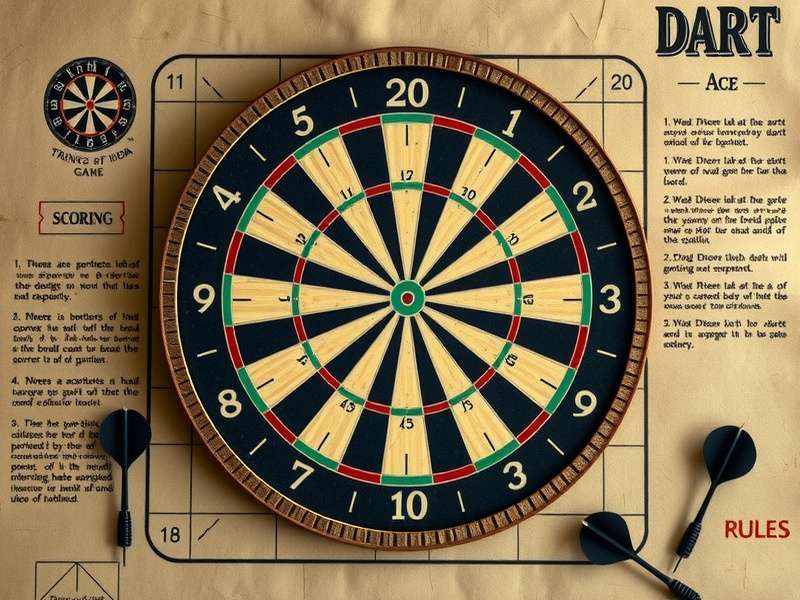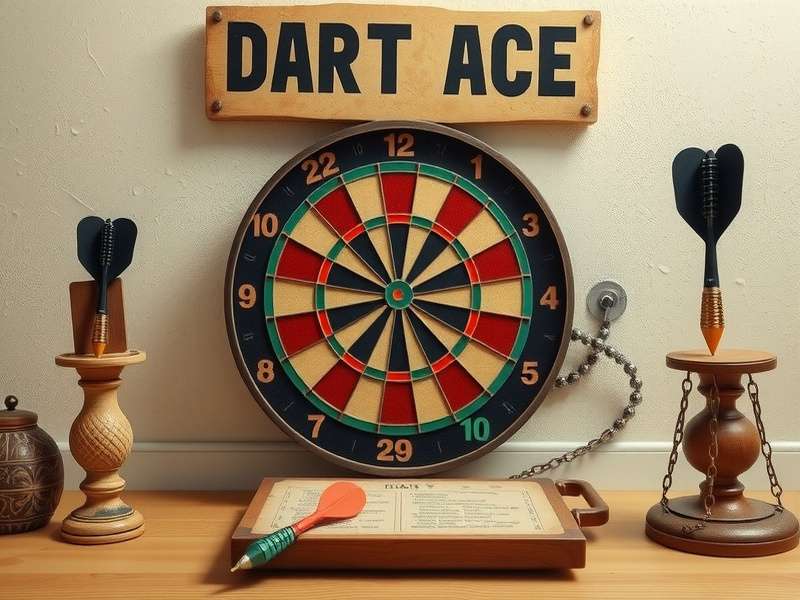Dart Ace Of India: The Complete Encyclopedia 🎯
📑 Table of Contents
🚀 Quick Facts: Dart Ace Of India
Origin:Traditional Indian villages
First Recorded:Early 19th century
Popularity:Widespread across rural and urban India
Competitions:National Dart Ace Of India championships held annually
Dart Ace Of Indiarepresents one of the most fascinating traditional sports that has evolved from simple village pastimes to a recognized competitive activity. This indigenous dart game showcases the precision, skill, and strategic thinking that has been part of Indian recreational culture for generations.
The game combines elements of accuracy, calculation, and physical coordination, making it both challenging and deeply engaging. Unlike Western dart games,Dart Ace Of Indiaincorporates unique scoring systems, specialized equipment, and cultural nuances that reflect its Indian origins.
What makesDart Ace Of Indiaparticularly remarkable is its ability to bridge generations. From elderly village masters to urban youth discovering traditional sports, the game maintains its appeal across demographic boundaries while preserving its cultural authenticity.
📜 Historical Origins of Dart Ace Of India

The origins ofDart Ace Of Indiacan be traced back to agricultural communities in rural India, where farmers and villagers would engage in precision games during leisure time. Historical records suggest that the earliest forms of this game emerged in the early 19th century, though oral traditions indicate it may be much older.
Initially played with handmade darts crafted from available materials like wood, feathers, and metal scraps, the game served multiple purposes. It was not merely entertainment but also a way to develop hand-eye coordination, which was valuable for various agricultural and hunting activities common in rural life.
🎯 Historical Milestone
The first organized competition of Dart Ace Of India was documented in 1923 in Maharashtra, marking the transition from informal village play to structured sporting events. This competition established standardized rules that would later form the foundation of modern gameplay.
Regional variations of the game developed across different parts of India, each adding local flavors and rules. The northern version emphasized distance throwing, while southern adaptations focused on precision and complex scoring systems. These regional differences eventually merged to create the unified version known today asDart Ace Of India.
British colonial records from the late 19th century mention "native dart games" being played in villages, though they often misunderstood the cultural significance and complexity of these activities. It wasn't until after independence that concerted efforts were made to document, preserve, and standardize traditional Indian games likeDart Ace Of India.
🔄 Evolution and Development
The transformation ofDart Ace Of Indiafrom a rural pastime to an organized sport represents a fascinating case study in the preservation and modernization of traditional games. The mid-20th century saw significant developments as urban Indians began rediscovering traditional sports.
In the 1970s, the first formal rulebook forDart Ace Of Indiawas published by the Traditional Sports Federation of India. This document standardized equipment specifications, playing distances, scoring systems, and competition formats, creating consistency across different regions and play levels.
🏆 Modern Recognition
Dart Ace Of India gained national sports recognition in 1998, allowing players to compete at state and national levels officially. This recognition led to increased funding, training programs, and the establishment of dedicated Dart Ace Of India academies across several states.
The digital age brought new opportunities forDart Ace Of India. Online tutorials, video demonstrations, and virtual competitions have introduced the game to global audiences while mobile applications have created digital versions that maintain the strategic elements of the physical game.
International interest inDart Ace Of Indiahas grown steadily, with demonstration events held during cultural festivals worldwide. The unique combination of skill, strategy, and cultural heritage makes it an attractive ambassador for Indian traditional sports on the global stage.
📋 Game Rules and Regulations

The official rules ofDart Ace Of Indiacombine traditional elements with modern competitive standards. Understanding these rules is essential for both casual players and serious competitors aiming to master this unique game.
Basic Gameplay Structure
A standard game ofDart Ace Of Indiais played between two players or two teams. Each player throws three darts per turn, aiming at a specialized target board with distinct scoring zones. The game typically consists of multiple rounds, with players taking alternating turns.
The objective varies by game format but generally involves accumulating points by hitting specific target areas or achieving particular combinations. Unlike Western darts,Dart Ace Of Indiaincorporates rotational elements where players must sometimes change throwing positions or use different dart types within a single game.
Scoring System
The scoring inDart Ace Of Indiais notably complex, rewarding both precision and strategic planning. The circular target is divided into multiple concentric rings, each with different point values. The outermost ring typically scores 5 points, moving inward to 10, 15, 20, and the bullseye at 50 points.
🎯 Special Scoring Zones
Dart Ace Of India features unique scoring zones not found in other dart games. The "Shiva's Eye" at the center awards triple points, while the "Lotus Petals" around the edge provide bonus multipliers when hit in sequence.
Strategic elements include "combination shots" where players must hit specific sequences of numbers to unlock bonus points. This adds a layer of mental challenge beyond simple accuracy, as players must plan several moves ahead while adapting to their opponent's performance.
Game conclusion varies by format. In "Points Play," the first player to reach a predetermined score wins. In "Round Play," players compete to achieve specific targets in each round, with the winner being whoever completes the most rounds successfully. The "Elimination" format requires reducing an initial score to exactly zero.
⚙️ Equipment and Setup
The specialized equipment used inDart Ace Of Indiareflects its cultural origins while meeting modern safety and performance standards. Understanding this equipment is crucial for proper gameplay and appreciation of the sport's nuances.
The Darts
TraditionalDart Ace Of Indiadarts were crafted from natural materials, but modern competitive darts follow strict specifications. Regulation darts must weigh between 18-22 grams and measure 12-16 centimeters in length. The dart consists of four parts: point, barrel, shaft, and flight.
The barrel typically features intricate grip patterns to accommodate different throwing styles. Traditional designs often incorporate cultural motifs, while competitive darts prioritize functional ergonomics. The flights (stabilizers) come in various shapes that affect dart trajectory and stability.
The Target Board
TheDart Ace Of Indiatarget board differs significantly from Western dartboards. It features a unique color scheme with saffron, white, and green sections reflecting the Indian flag. The board is typically made of compressed sisal fibers that self-heal when darts are removed.
📏 Official Dimensions
The regulation Dart Ace Of India board has a diameter of 18 inches (45.72 cm). The center bullseye measures 0.5 inches (1.27 cm) in diameter. The board is mounted with the center 5 feet 8 inches (1.73 meters) from the floor.
Throwing distance is standardized at 7 feet 9.25 inches (2.37 meters) from the front of the board to the throwing line. The board is divided into 20 numbered sections, but unlike Western darts, these are arranged in a different sequence that requires memorization for advanced play.
Advanced players often customize their equipment based on personal preference and playing style. This includes selecting specific barrel weights, shaft lengths, and flight shapes that complement their throwing technique. Such customization is an important aspect of masteringDart Ace Of Indiaat competitive levels.
💡 Playing Techniques and Strategies

MasteringDart Ace Of Indiarequires developing proper technique, consistent form, and strategic thinking. Professional players spend years refining their approach to achieve competition-level performance in this demanding precision sport.
Fundamental Throwing Technique
The basic throwing stance inDart Ace Of Indiainvolves standing sideways to the board with the throwing arm's shoulder pointing toward the target. Feet should be shoulder-width apart, with the front foot slightly forward for stability. Weight distribution is crucial, with about 60% of weight on the front foot.
The grip varies among players, but the most common is the "precision grip" where the dart rests on the pads of the fingers rather than deep in the palm. The thumb provides stability while the index and middle fingers control the release. Consistent grip pressure is essential for accuracy.
🎯 Pro Tip: The Follow-Through
Professional Dart Ace Of India players emphasize complete follow-through, with the throwing hand continuing toward the target after release. This ensures consistent trajectory and reduces side-to-side variation in dart placement.
The throwing motion should be smooth and consistent, originating from the elbow rather than the shoulder or wrist. A slight forward lean can help maintain balance and improve sightlines. The non-throwing arm acts as a counterbalance, positioned naturally at the side or slightly forward.
Advanced Strategic Play
Beyond physical technique,Dart Ace Of Indiarequires considerable mental strategy. Players must constantly calculate scores, anticipate opponent moves, and adjust their targeting based on game situation. This cognitive aspect separates casual players from serious competitors.
Shot selection strategy involves balancing risk and reward. High-value targets often have smaller surface areas, requiring greater precision. Situational awareness determines when to attempt difficult shots versus securing easier points consistently. This decision-making process becomes increasingly complex in tournament settings.
Psychological elements also play a significant role in high-levelDart Ace Of Indiacompetition. Maintaining focus under pressure, reading opponents' patterns, and managing momentum shifts are skills that champions develop through experience and mental training.
🌍 Cultural Significance and Impact
Dart Ace Of Indiaholds a special place in Indian cultural heritage, representing more than just a recreational activity. The game embodies values of precision, patience, and strategic thinking that resonate throughout Indian philosophical traditions.
In many communities,Dart Ace Of Indiatournaments are social events that bring together people from different backgrounds. These gatherings often coincide with festivals and celebrations, strengthening community bonds while preserving traditional gameplay.
🎉 Festival Integration
During Diwali celebrations in many regions, special Dart Ace Of India competitions are held with decorated boards and ceremonial opening throws. These events blend sport with cultural observance, maintaining the game's traditional roots while adapting to modern contexts.
The game has inspired artistic expressions across various media. Traditional paintings often depict dart players in action, while contemporary artists incorporateDart Ace Of Indiamotifs into modern works. This artistic representation helps preserve the game's cultural relevance across generations.
Educational initiatives have emerged that useDart Ace Of Indiato teach mathematical concepts, physics principles, and strategic thinking. Schools in several states have introduced the game as part of physical education curricula, recognizing its cognitive benefits alongside physical development.
The future ofDart Ace Of Indiaappears promising as renewed interest in traditional sports continues to grow. With organized competitions, digital adaptations, and international exposure, this unique game is positioned to maintain its cultural significance while reaching new audiences worldwide.
🚀 Modern Adaptations and Future Directions
AsDart Ace Of Indiacontinues to evolve in the 21st century, several innovative adaptations are shaping its future. These developments balance preservation of traditional elements with modernization that ensures the game's relevance to contemporary audiences.
Digital and virtual reality versions ofDart Ace Of Indiahave emerged, allowing players to experience the game without physical equipment. These adaptations faithfully recreate the strategic complexity while making the sport accessible to people with space limitations or physical disabilities.
Competitive structures forDart Ace Of Indiahave become more formalized with the establishment of professional leagues, ranking systems, and international invitational tournaments. These developments have raised the game's profile while creating career opportunities for elite players.
🌐 Global Expansion
The International Traditional Sports Association has recognized Dart Ace Of India as an official demonstration sport, with plans for inclusion in future world games. This international recognition represents a significant milestone for the game's global expansion.
Technological innovations are enhancing both player training and spectator experience. Motion capture systems analyze throwing technique, while augmented reality applications provide real-time statistical overlays during competitions. These technologies deepen understanding of gameplay while making it more engaging for audiences.
The ongoing development ofDart Ace Of Indiademonstrates how traditional sports can thrive in the modern era through thoughtful adaptation. By honoring its cultural roots while embracing innovation, the game maintains its unique identity while reaching new generations of players worldwide.